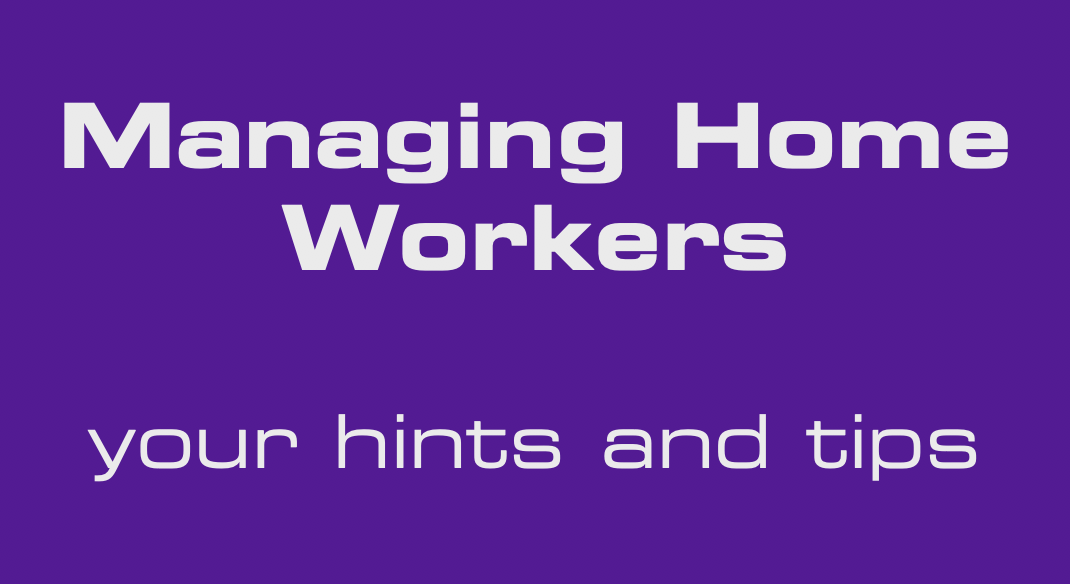This is a resource open to any manager who is faced with managing people now working at home. Whether you have managed home workers for some time or you have suddenly found your employees sent home, we welcome your contribution. Tell us about your experiences, good and bad, pose questions and share ideas about how to cope in the current climate. Peter Thomson and the Wisework Partners will also be sharing their experience of working with many flexible working organisations.


9 comments
Heard a great wellbeing tip at a networking event. Online Friday ‘Happy Hour’ WhatsApp group where the team can send fun photos and activities to get everyone involved. A brilliant way to let off steam and feel good in isolation.
I’ve found that WhatsApp can be a great distraction, probably because I have ‘notifications’ on so every time someone sends a witty comment or a funny video I’m tempted to take a look. So the idea of having a “Happy Hour” is great, then people are less tempted to look when they should be focussing on work.
Just heard someone extolling the virtues of a virtual lunch for those who usually gather for lunch in the office. Sounds like a good way of keeping people together in these difficult times.
On time
The regular “drum beat” of arrival and leaving work, of meetings, of bumping in to people in corridors all provide structure which many people value and miss when working from home. It is important to replicate at least some of this in home working.
Do set up regular contact via Teams, Skype, Zoom or whatever you can use, including telephone.
Don’t feel forced to hold virtual meetings at the beginning and end of the day. The same structure may not work at home and if everyone is doing it at the same time the internet may struggle.
Do recognise that people working from home at the moment will have to take account of the needs of spouse and children all trying to do the same thing – get something done at home. Ask people what works best for them
I’m not sure if I should insist on my people still working their regular hours whilst they are at home. For some that is difficult because they have children, others have no problem. I would like to be able to contact them during working hours and to know they are still working but do understand they have family pressures.
It’s unlikely that all people working from home can stick with normal working hours. Identify tasks that have to be done at a specific time and make sure they are being done by someone who can be available at that time. Let employees choose when to do the non time-critical tasks and measure them on results.
Robert,
Depending upon the industry sector, it may be necessary for some home/ remote workers to be contactable and for them to respond to issues quickly (Let’s say an hour). Very rarely is even the most urgent problem a matter of life or death.
The work tasks carried out by home/remote workers should be allowed to fit around family, caring or other duties. When you are measuring output when they do the work shouldn’t matter.
That said home workers should have indicated, had agreed, their normal working patterns or their preferred contact times with team or managerial leaders.
Don’t forget that working together is a social activity. Provide your team the opportunity to chat about non-work topics, just as they would when working side by side. If you are running an online meeting, perhaps a video conference, encourage people to turn up early and have chat before the formal agenda takes over.
It is important to provide opportunities for informal communication for home workers, but it is perhaps even more important in remote meetings to actually have a structured agenda. Online meetings can be tricky to manage effectively.